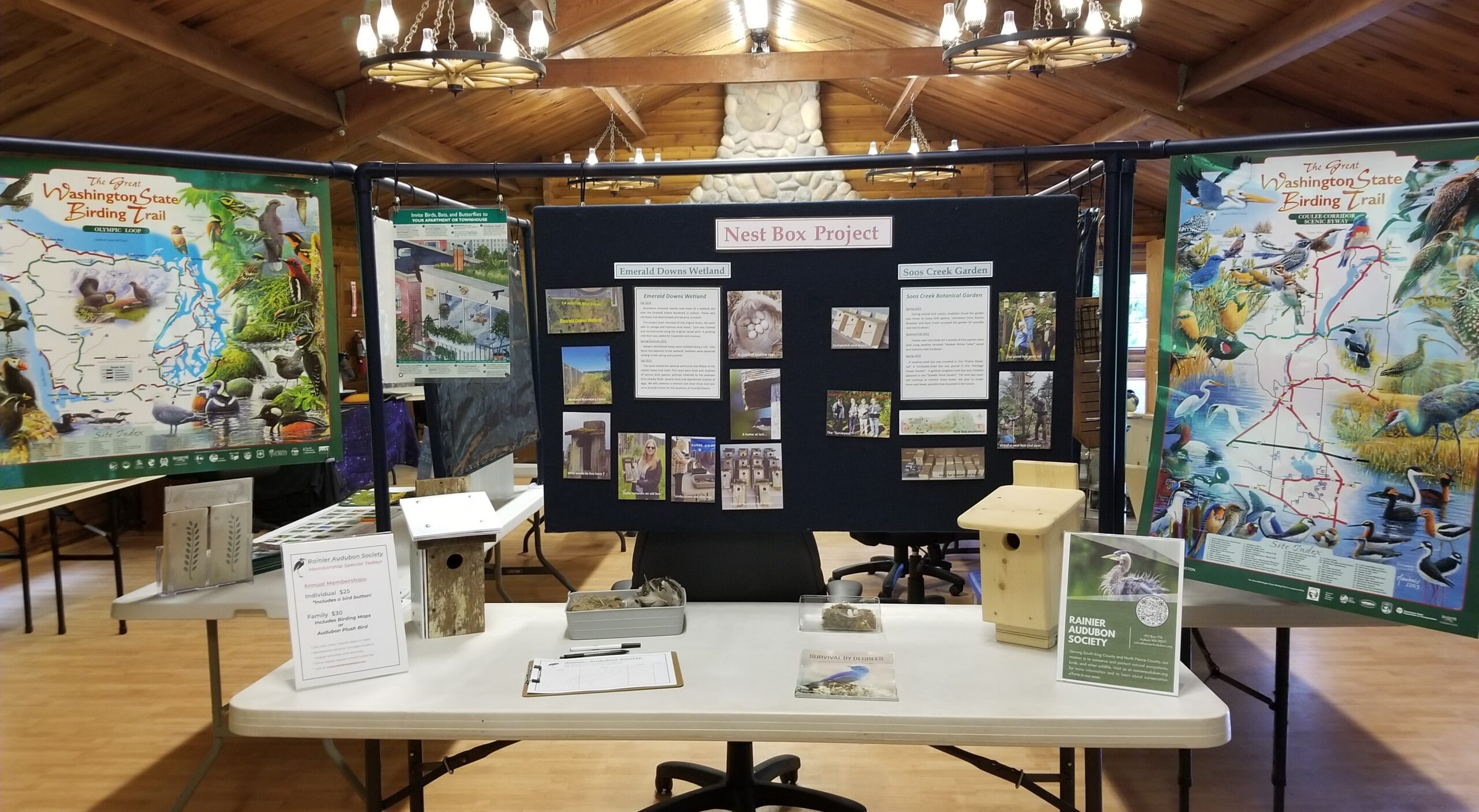
Mewsings from Millie – September 2024
(Reprinted with permission from the Burien Wild Birds Unlimited store.)

FIRE! No one likes to hear that! We all know that a forest fire can be devastating to both humans and wildlife alike. Surprisingly, however, wildfires can be beneficial as well.
The biggest effect fire has on wildlife is the change in their habitats. Fire alters the proportion, arrangement, and characteristics of habitats across the landscape. Immediately after a fire there can be a temporary loss of food and shelter. Animal populations may shift from those that prefer cool, moist conditions to species that prefer warm, dry conditions.
Often after a fire, grassy habitats or broadleaf forests become established. In some cases, the nutrition content and digestability of plants will increase as well. Fire-killed trees become food for millions of insect larvae and snags provide perches for raptors. Snags and woody debris also provide habitat for cavity nesters, reptiles, small mammals and even bears.
Here in the United States there are six birds that rely on the restorative nature of wildfires to create the habitat they need to survive. These so-called ‘firebirds’ are the Kirtland’s Warbler, the Mountain Plover, the Brown Thrasher, the Black-backed Woodpecker, the Red-cockaded Woodpecker and the Wrentit.
Kirtland’s Warbler has been one of the rarest songbirds in North America. It can only be found in small areas of Michigan, Wisconsin and Ontario during the breeding season. These warblers nest primarily in large stands of young Jack Pine, which are created by regeneration from seed after intense fires. A new forest can become a suitable home for the Kirtland’s Warbler, that is the preferred age and height, after about five years.
The Mountain Plover is a species of shorebird, but it doesn’t live near the shore or nor in the mountains as its name may imply. It lives on the Great Plains! This bird is highly dependent on disturbances such as grazing and fire. In Colorado’s Pawnee National Grassland controlled burns are used to create habitat for the Mountain Plover, whose numbers, like those of so many birds, are in decline.
Brown Thrashers thrive in areas that have had wildfires. They prefer shrubby habitats, forest edges, and other types of second growth or regenerated vegetation.
The Black-backed Woodpecker can be found in northern North America, the Rocky Mountains, and the Cascades/Sierra Nevada. They love recently burned forests because they can find their favorite treat: wood-boring beetle larvae. With the birds’ black backs, they are perfectly camouflaged against the bark of burned trees as they forage for food.
The Red-cockaded Woodpecker was once common in the longleaf pine forests of the southeast. Historically, this forest type burned at least once every few years. This crated widely spread trees that allowed the sun to nourish a great variety of forest plants. Today, longleaf pine is reduced to only 2% of its historic range, the frequency of fires has been reduced, and the Red-cockaded Woodpecker has suffered as a result.
Fires create a mosaic of shrub diversity. On the West Coast near the Pacific Ocean, the Wrentit thrives in habitat known as chaparral which is dominated by shrubs such as manzanita, huckleberry and salal. There they can nest, find food, and be protected from predators such as snakes and the California Scrub-Jay.
So, fire CAN be a good thing!
Until next time,
Millie, the Muse of Mews



